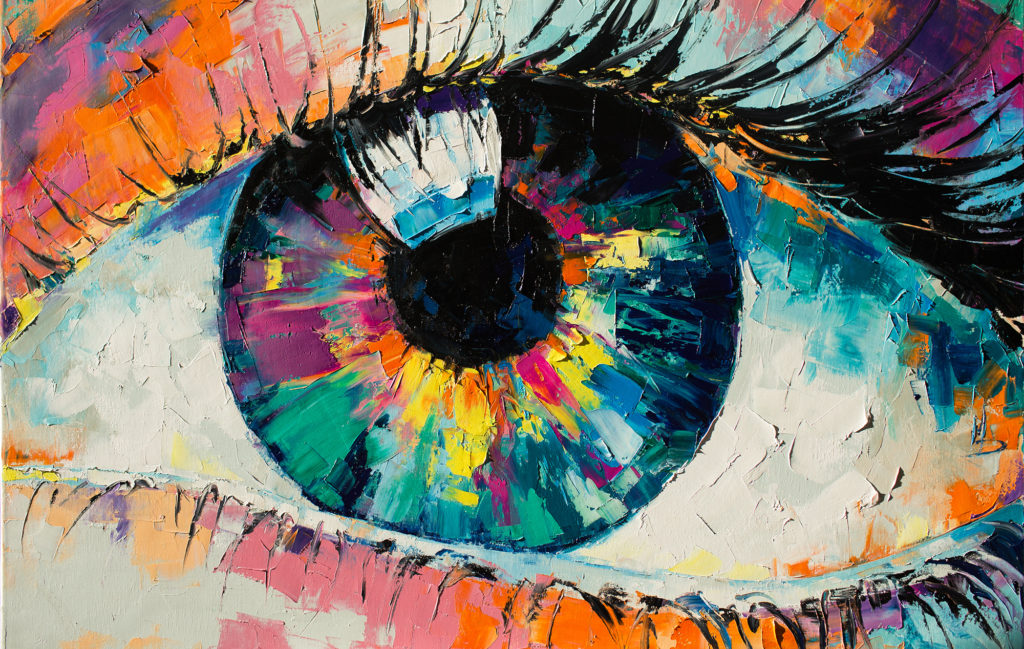How Trump Art Mirrors Modern Political Satire in the Art World
How Trump Art Mirrors Modern Political Satire in the Art World
Blog Article
Looking Into the Diverse World of Artistic Expression: From Surrealism to Abstract Realistic Look
In the world of imaginative expression, from the dreamlike landscapes of surrealism to the intricate play of light and type in abstract realistic look, artists have actually continually pushed the borders of creativity and imagination. As we check out the diverse globe of art, we are offered with a tapestry of styles, techniques, and ideologies that challenge our understanding and provoke reflection.
Surrealism: Releasing the Subconscious
Surrealism, an avant-garde artistic motion of the 20th century, looked into the depths of the subconscious, introducing a world of dream-like images and unique associations. Headed by musicians like Salvador Dali, René Magritte, and Joan Miró, Surrealism looked for to challenge the traditional means of recognizing and seeing art. Via techniques such as automatism and desire analysis, Surrealist artists intended to use the subconscious mind to reveal hidden truths and wishes.
One of the vital elements of Surrealism was the focus on the unreasonable and the exceptional. By integrating unexpected elements in their works, Surrealist musicians intended to create a feeling of disorientation and surprise in the customer. This disruption of reasoning and reason was implied to provoke a much deeper expedition of the subconscious and the mysteries of the human psyche.
Abstract Realistic Look: Redefining Understanding
Testing conventional artistic borders, Abstract Realistic look redefines assumption with the combination of identifiable components with abstract types. This ingenious technique to art integrates the representational precision of realism with the imaginative flexibility of abstraction, supplying visitors an unique aesthetic experience that prompts them to examine their perception of fact.
In Abstract Realism, artists make every effort to capture the essence of their subjects while also infusing their work with a sense of deepness and intricacy via abstract components. By blending the aware of the strange, these artists welcome target markets to involve with their pieces on several levels, motivating them to explore the nuances of color, type, and texture.

Cubism: Fragmentizing Fact
Utilizing geometric forms and fragmented perspectives, Cubism changed the creative depiction of reality in the early 20th century. This approach not only deconstructed fact but also emphasized the flatness of the canvas, paving the means for future abstract art activities.

Cubism can be classified right into two main phases: Analytical Cubism, defined by single color systems and elaborate, fragmented forms; and Synthetic Cubism, which included collection components and brighter colors into the compositions. More about the author Through these distinct phases, Cubism influenced not only paint but additionally design, sculpture, and style. trump art. Its impact resounded throughout the art globe, motivating artists to check out brand-new ways of analyzing and standing for the world around them
Expressionism: Emotions on Canvas
Checking out the depths of human feelings via expressive and vivid brushstrokes, Expressionism Clicking Here became a profound imaginative movement in the very early 20th century. Unlike previous art motions that concentrated on portraying the external globe, Expressionism dug into the internal realm of the artist's psyche, aiming to evoke raw emotions and prompt visceral feedbacks from visitors.
Expressionist artists, such as Edvard Munch, Egon Schiele, and Emil Nolde, declined conventional concepts of elegance and realism for distorting type and color to communicate subjective sensations. Using overstated brushwork, bold colors, and distorted figures helped develop a sense of anxiousness, alienation, or enthusiasm in their works.
One of one of the most renowned instances of Expressionism is Munch's "The Scream," which captures the extreme anxiousness and misery of modern-day life through its swirling, distorted figure versus a blood-red skies. Via their psychologically charged jobs, Expressionist musicians looked for to test traditional artistic norms and provide a home window right into the stormy depths of the human soul.
Contemporary Art: Advancing Viewpoints

One of the defining qualities of modern art is its continuous development and capacity to adapt to changing cultural landscapes. Musicians are significantly incorporating technology right into their method, blurring the lines between the digital and physical realms. This blend of mediums permits ingenious methods of storytelling and engaging with target markets in a more interactive fashion.
Additionally, modern art often offers as a platform for social discourse, resolving pressing issues such as identification, national politics, and the atmosphere. Musicians are utilizing their job to prompt and trigger vital conversations idea, losing light on the complexities of the world we reside in. As viewpoints remain to develop, modern art continues to be a significant and dynamic force in forming our cultural landscape.
Verdict
In verdict, the world of imaginative expression encompasses a variety of activities and styles, each see page with its very own unique strategy to sharing significance and emotion. From surrealism's expedition of the subconscious to abstract realistic look's redefining of understanding, and from cubism's fragmentation of fact to expressionism's portrayal of feelings, art proceeds to develop and challenge perspectives - trump art. Contemporary art mirrors the ever-changing world we live in, using new methods to translate and understand the intricacies of our truth
As we check out the diverse globe of art, we are presented with a tapestry of styles, methods, and ideologies that challenge our understanding and prompt reflection. Its influence reverberated throughout the art world, inspiring artists to discover new methods of analyzing and standing for the globe around them.

Report this page